“Wow.”
My younger brother stopped still on the runway as we disembarked our plane at Innsbruck. In every direction, snow-capped mountains shot up to the sky. I found myself rubbing my eyes like a cartoon character, while he picked his jaw up off the floor.
Delivering us across the border to Brunico, our cab driver felt moved to score the scene.
“All this untz, untz, untz music, I can’t do! Phil Collins OK?”
The Alps looming majestically on both sides of the road, “In The Air Tonight” blasting comically loud, the journey fast became a core family memory. It felt stupendous, exciting; like your first time seeing Manhattan sparkle in the distance from JFK.
“This is the Brenner Pass… and now, Italy. Welcome in Italy!”
Dolomiti Superski brought us here: a network of twelve ski areas with 745 miles of slopes. Incredibly, they’re all accessible via one ski pass. Diego Clara, a fourth-league soccer player in the Nineties, is now a PR for his beloved resort. He’d promised the Italian Alps were something special; tales of solid sustainability credentials piquing my interest (and languorous pasta lunches). Can skiing ever be sustainable? Does that have to mean sacrificing some splendor?
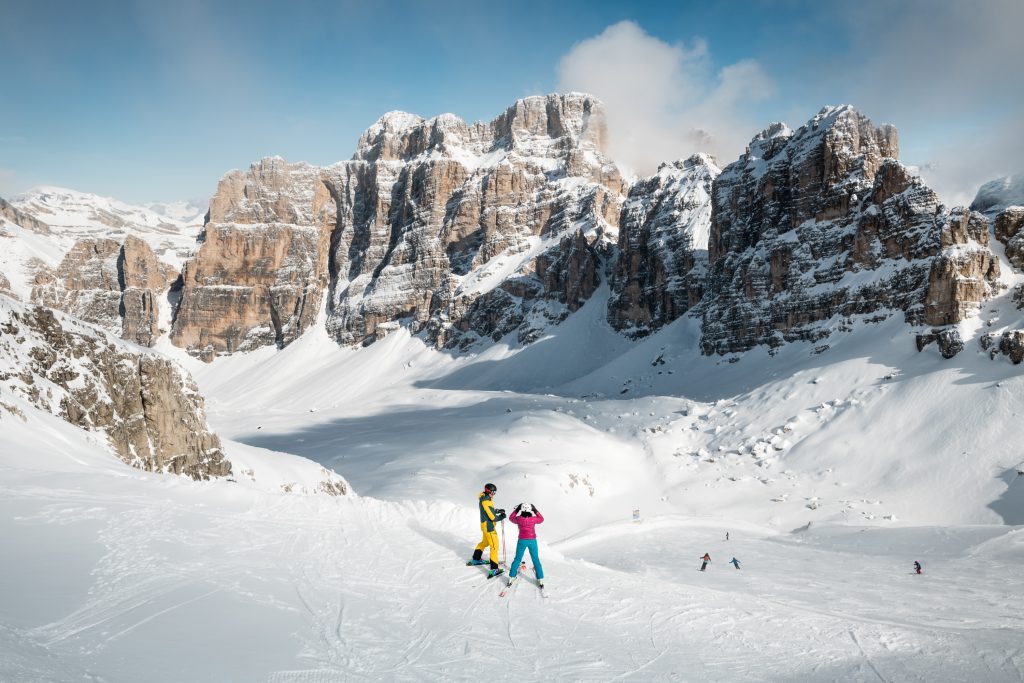
Cortina d’Ampezzo hosting the Winter Olympic Games of Milan-Cortina 2026, the resort is getting its game face on. Beyond retro hotels are being renovated, and green practices are on the up: heated lift seats work via resistance, not electricity and some piste bashers are running on vegetable oil. Cable cars have been installed to help alleviate car traffic. A free transport card covering buses, trains and a few cable cars across South Tyrol is handed to every hotel guest in the province.
A comprehensive local rail system features platforms that empty right out onto the slopes. We immediately loved the idea of the overnight train speeding people back to Rome. La dolce vita, alright — Italians know how to enjoy their weekends.
Day one, first lift. Tom and I craned our necks to catch our first glimpse of the peaks from up high. You can see Austria on the edges — and miles of black rock. My kid brother being the family sportsman, but a little rusty on skis, there was an added boon to this rare chunk of quality time: my short-lived sense of superiority.
“It’s like riding a bike,” he muttered, sliding in Diego’s colleague Daniela Holzknecht’s slipstream as she showed us the Plan de Corones-Kronplatz.
I nervously watched the Tom-shaped dot grow smaller.
“It’s OK. She is slow. Only ex-national ski team.”
A wink.
“Kronenplatz is a hill. You go up, and down. In Alta Badia we will take a journey.”
Trusted to promote essential tourism within a UNESCO World Heritage site, Diego has inherited a unique position of stewardship. Promoting reverence for a place this glorious shouldn’t be hard work, but he certainly makes it look easy.
“Everything you see is the national park.”
“Do you think there’s another ski area this beautiful?” I asked.
A pause.
“Perhaps Lake Louise. I have skied in Banff. The Rockies are so varied geologically.”
“But we have the sun here, 300 days a year! That’s eight days out of ten, a bluebird. Austria has heavier snowfall. If it’s snowing there, you risk a few days of no skiing. Avalanche risks. In the Dolomites, the weather is less changeable.”
Hard to argue with him.
“The Alps are the protection screen. All that bad weather coming from the UK!” I tell him I moved to Portugal.
Terrain is totally different to that of North America. If a (frowned-upon) off-piste skier causes avalanches or other damages, they’re prosecuted, risking high fines or jail. A powder day that’d make Copper park rats call in sick to beat traffic would have a skier in the Dolomites hit the snooze button.
“Here, you ski on your edges,” Diego said during one chairlift.
“No costs of grooming and your daily passes are three times the price of ours!” — an Italian man interjected, hearing an American accent in our party. Hard to argue with that, either.
Aside from immaculate pistes, the smorgasbord of cultures is a draw. After World War One, traditional Austrian met old school Italian, now mixed with Mediterranean and modern — and, not so modern — international. Hotels and mountain restaurants are run by mammas and papas, a world away from soulless self-services counters (and US prices).
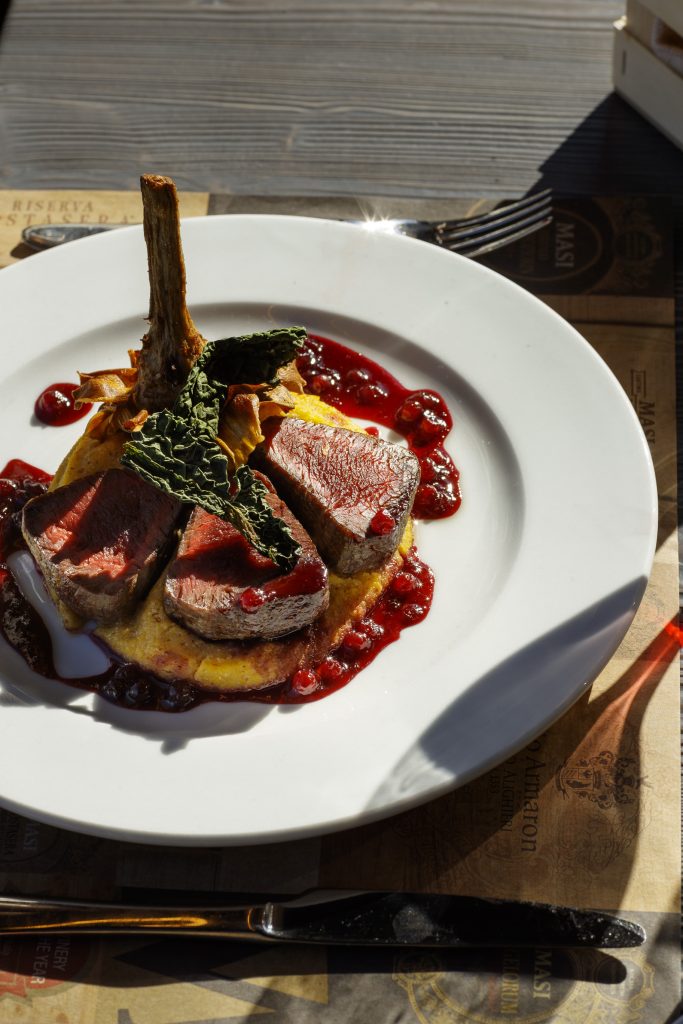
With old-world charm came old-world thinking. At the end of each meal, the check was handed to Tom, over me (“it’s more elegant”), while I took deep breaths and slowly counted to dieci.
Such a mix of deeply rooted traditions guarantees a few mishaps. All I’ll say is what means “three peaks’ in one language means “three tits” in another. If your ski instructor yells “DAIIII!” they mean “go,” not a somewhat aggressive command. The quickest way people reveal their nationalities (!) is in the sauna. It’s all good fun.
Breakfast could be a French pastry, lunch a hearty plate of goulash and dinner a three Michelin-starred tasting menu of cheeses and meat. Waiters say hello in German, Italian and Ladin, the oldest language in South Tyrol. Visitors come from all over.
“It’s like… Epcot.” my brother mused.
Inevitable hangovers are brushed off Italian style, with a quick espresso. My request for a proper Bombardino (whiskey, Advocaat, yet more coffee and whipped cream) was met at one of the many Refugios. These rustic mountain huts dot the slopes in spectacular locations; offering beer, wine, a simple meal and a place for weary wanderers to rest.
Kaiserschmarren (shredded pancakes) eaten with blueberry jam at Badia’s Santa Croce refuge, were unforgettable. Skis are thrown off and wedged in the snow outside the stunning Santa Croce church, gleaming white against cerulean skies. Sas dla Crusc mountain dominates the view.
In fact, every stop off is an event, somehow more lavish than you’d dreamed. You might find yourself eating warm chocolate cake served with stone pine ice cream, or feasting on tinned fish in a family-run cabin owned by a famous yodeler.
At the end of one epic morning, we took a sharp left off the slope, and stopped at a clearing. A wooden table was set for an incredibly posh outdoor picnic — viral, “Instagram proposal” posh — with a backdrop to make your eyes water. The Brunch Tribe ferried dishes out from a gorgeous private cabin. We were dumbfounded by a huge slab of sliced local beef, served with Bergmannhof “Karl” Lagrein Riserva, aged in tonneau for eighteen months.
“What cut is this? It’s incredible.”
“The ass of the cow.”
Back in Kronplatz, AlpiNN Food Space & Restaurant defies belief, and gravity. Chef Norbert Niederkofler “cooks the mountain,” his all-glass restaurant sitting amongst the clouds. Astonishing 360-degree views are interrupted only by the occasional paraglider cutting through the vista.
Menus are made from local hand-dyed sheep’s wool, tables uneven in shape. Seats offer purpose-built holes to clip your helmet to. Serpentine marble was taken from the surrounding mountains for countertops. Ingredients are only local, and seasonal. All in cool juxtaposition to the resort’s largely old-fashioned feel.
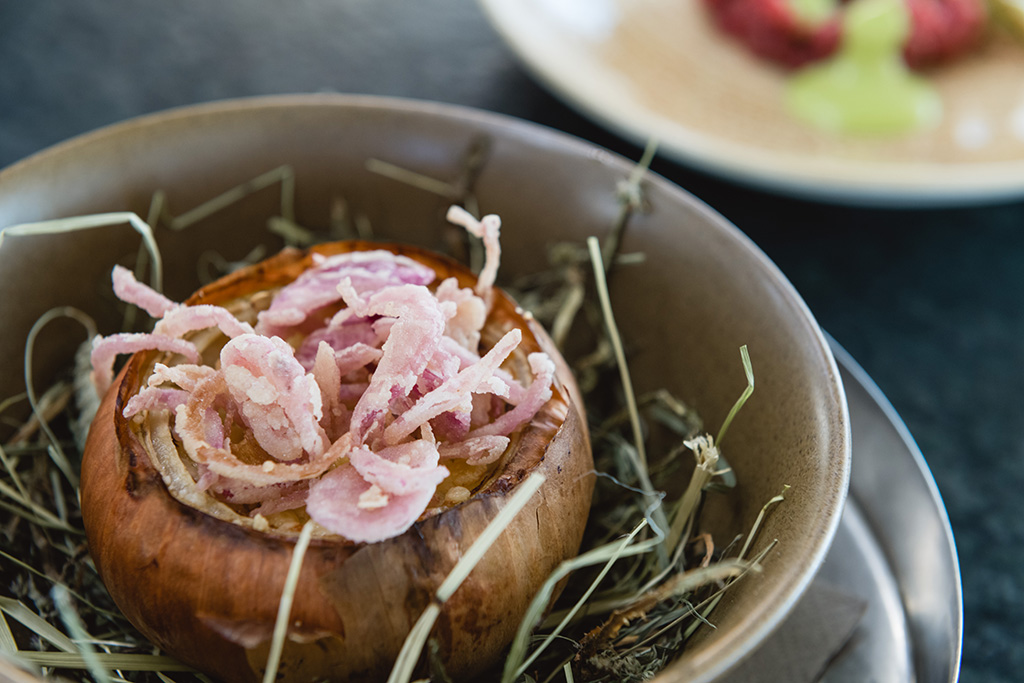
I went for “Onion, onion and ‘Sasso Nero’ cheese”: a whole onion cooked in ash, then filled to the brim with Aurina Valley Sasso Nero cheese gratin and crispy sour onion. Completely fantastic, I scraped it clean empty.
If eating Michelin-approved meals in your ski boots isn’t novel enough, one can clomp next door to the excellent Lumen museum. Peering at photographs of the world’s first skiers and mountaineers at 2000m altitude, half-cut on regional vino rosso, is a pleasantly bizarre experience.
World-class wine, of course, is everywhere. Cortina’s Masi wine bar and restaurant stands out, which serves pastas and speck as an accompaniment to wine – not the other way around. Better still, you’re seen out of practically every door — including Masi — with a hefty dose of grappa.
“This is better than any cold medicine. It’s a bitter root and chili. You are not allergic to chili?” Diego asked, already pouring out shots.
“Last time I was here I drank these, and my friend drank beers. My friend’s wife called me the next day to check if I was still alive — I said yes, I was in perfect shape! Like a running shoe! He was not. It’s a liver booster! You’ll be strong like fishermen!”
The next day saw us fishermen voyage around the Sellaronda, clockwise. Probably the most famous tour in the Dolomites — and Europe — it’s perfect for intermediate skiers. In one day or less, you can touch central ski resorts Alta Badia, Val Gardena, Val di Fassa and Arabba-Marmolada, without taking off your skis.
You can do it fast, too. Faster with the help of an Aperol Spritz (if you can get one).
“We don’t serve that. In line with our philosophy.”
I was shut down by a rather serious waiter, handing me a Campari instead.
“Royalty drink Campari. The people drink Aperol,” came the clarification.
“It’s more elegant,” Tom contended, as I shot him daggers.
Lack of moguls, perfectly groomed pistes and steep inclines call for specific skill sets and steel nerves. Snowboarders are few, but seem to love the challenge — and the speed. When Tom inevitably began sailing past me, I hardly minded.
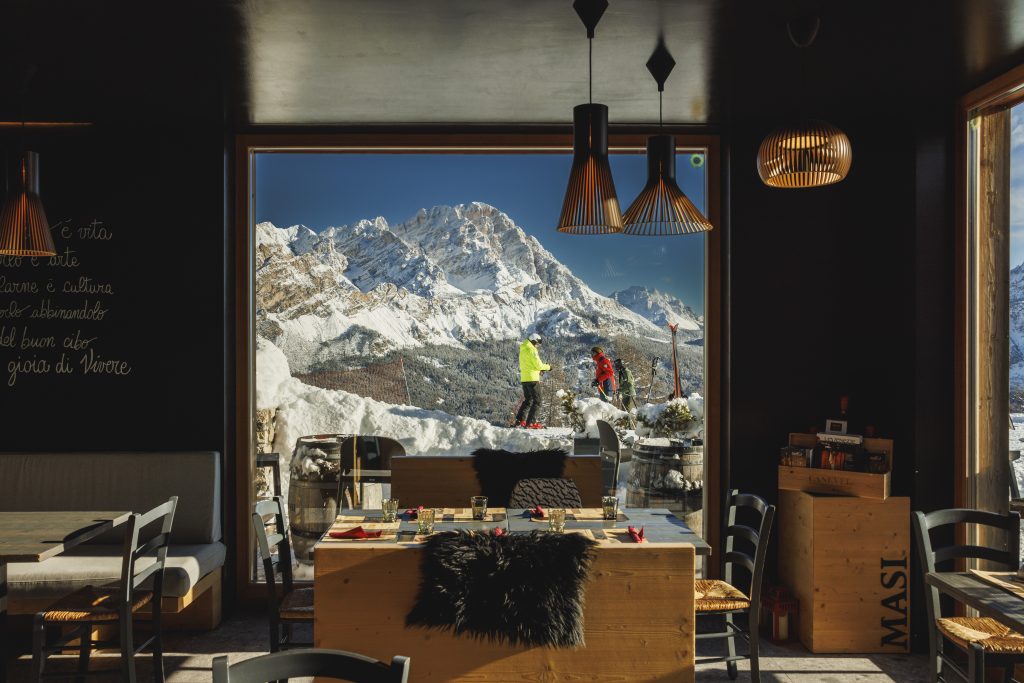
Lagazuoi Peak afforded the most spectacular moment of the trip, our last hour up the hill. Nothing could have prepared us for the raw spectacle of the “Hidden Valley Run” and the highlands of Pralongià in Alta Badia. A spaghetti tangle of blue ice walls and tree-lined slopes was framed by utterly sublime topography, shrouded in thick, moody mist for added mystique.
Improbably, two alpacas (Zitta and Babylon) appeared from nowhere to wave us off home, before a handsome Noriker horse pulled up to drag us to our car transfer, bell tinkling. What a place — and one well worth preserving. Weeks after our visit, the International Ski Federation was forced to cancel the women’s World Cup downhill and super-G races in Germany, due to warm temperatures and poor snow. The amount of countries fit to host snowsports is fast dwindling due to climate change. The International Olympic Committee predicts only ten countries will be copacetic by 2040.
“The Dolomites is about people coming together. Farmers had the land. They built the lifts. They started the culture. Others come in and try to replicate that. But it’s an impossible job. We must take care of what we have.”
We nodded. Something everyone can agree on.



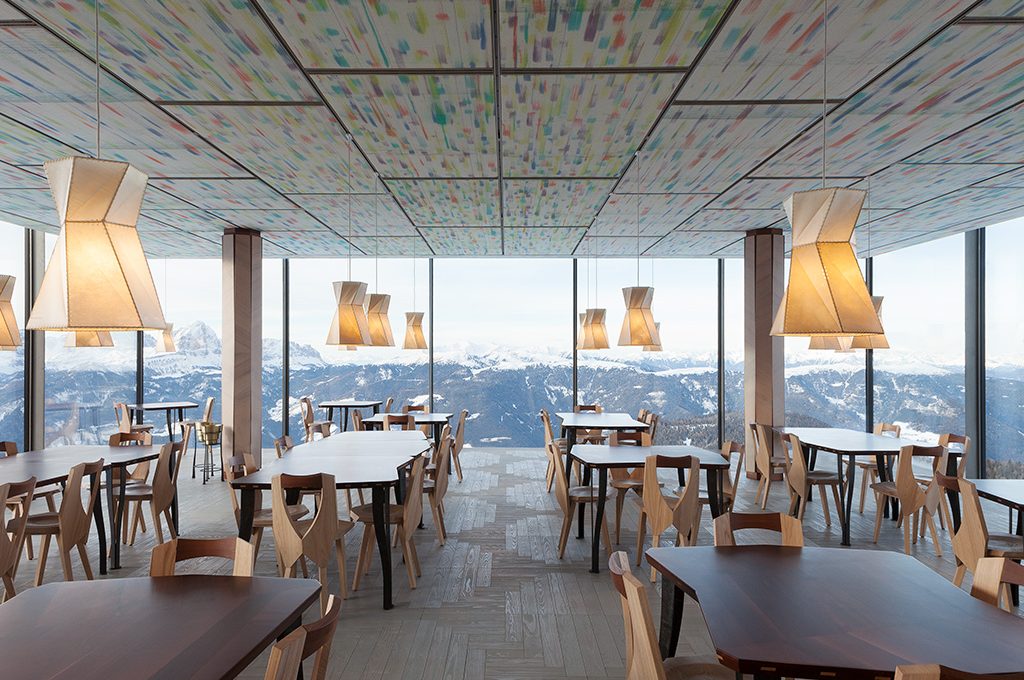






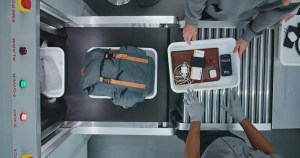
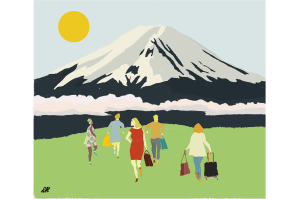
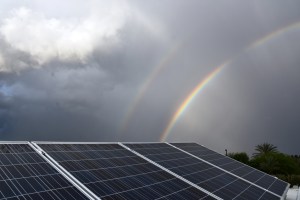
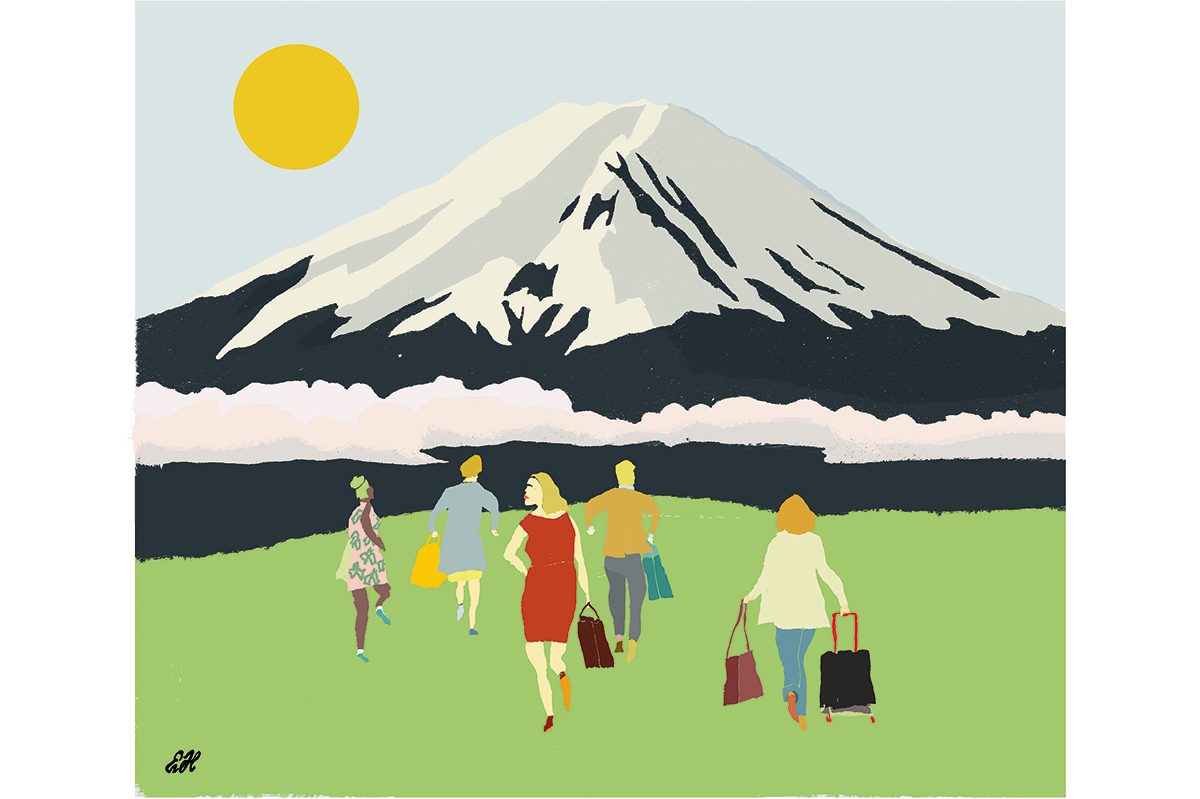

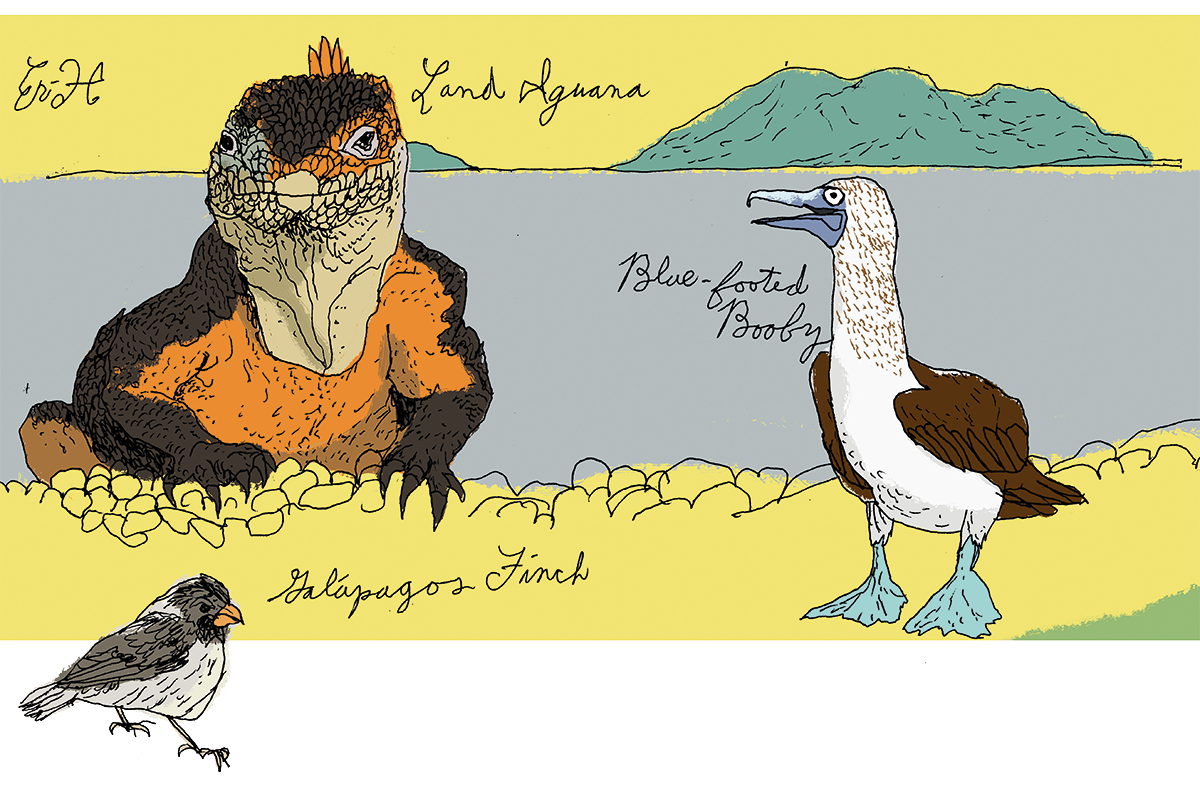
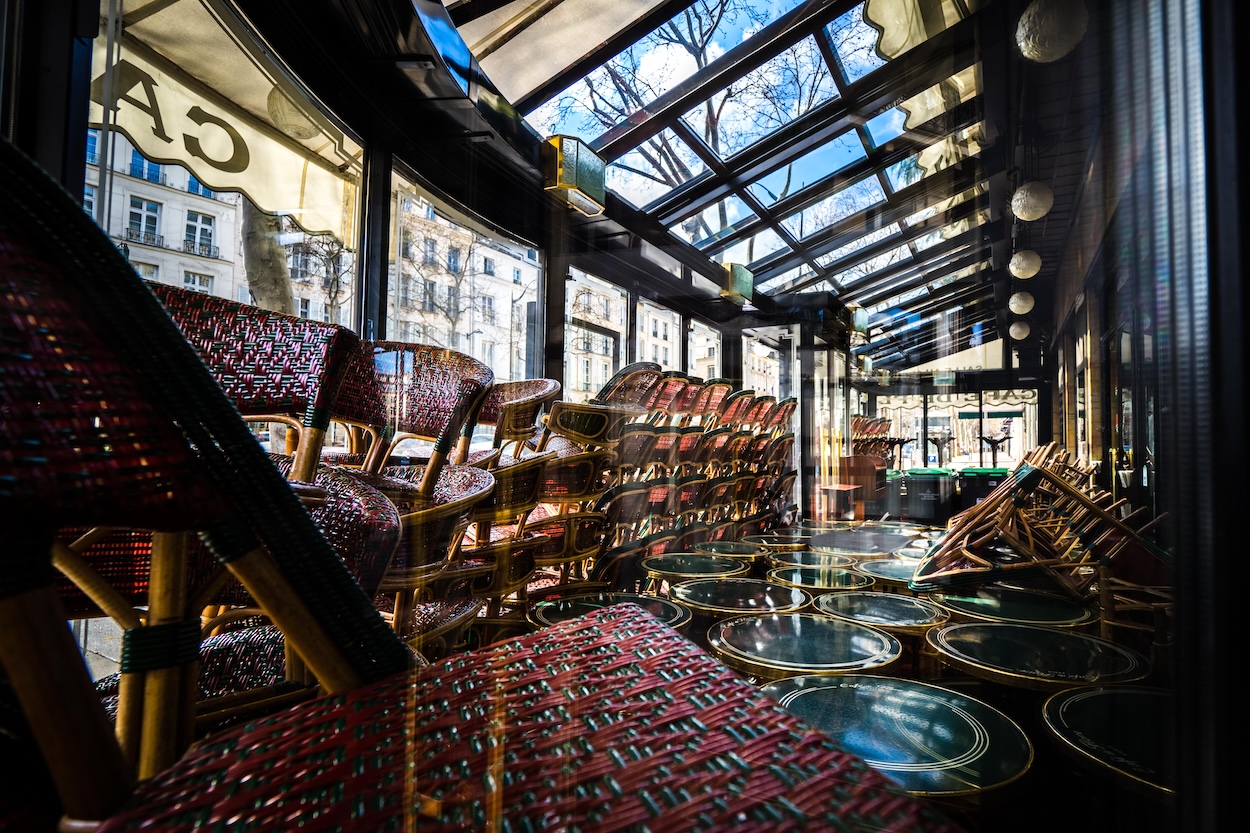
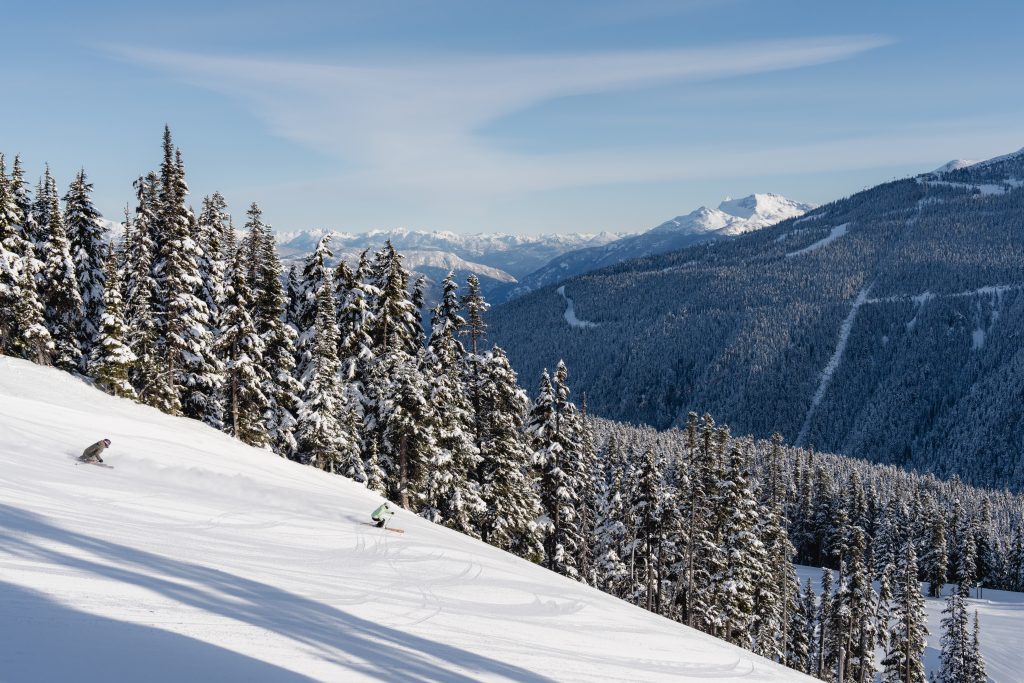
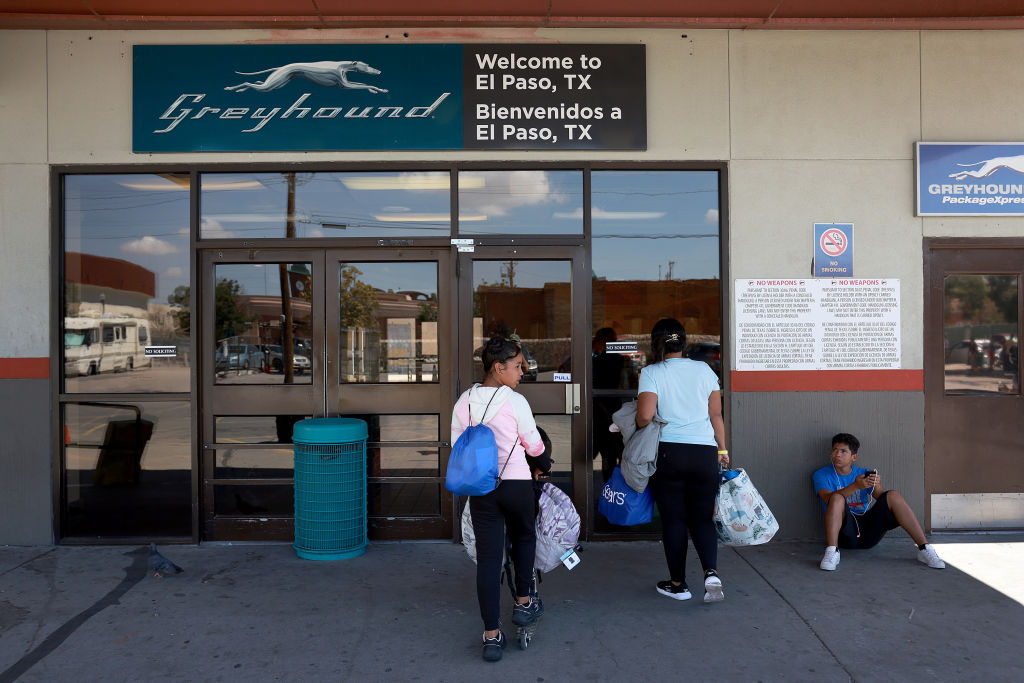







Leave a Reply